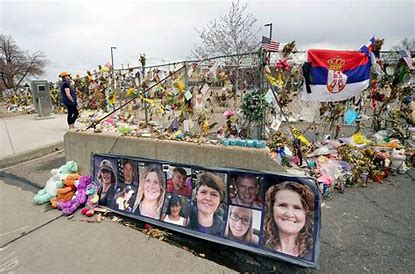Introduction

Transnational organized crime networks represent a complex and pervasive threat to national security and global stability. Within the United States, these networks operate clandestinely, engaging in a myriad of criminal activities ranging from drug trafficking to human smuggling. This paper delves into the intricate web of transnational organized crime within the USA, examining its origins, operations, and the challenges it poses to law enforcement and society. By understanding the dynamics of these networks, policymakers and law enforcement agencies can develop effective strategies to combat their influence and protect the integrity of the nation.
Transnational organized crime networks have evolved into sophisticated entities that transcend geographical boundaries, exploiting weaknesses in legal and regulatory systems to further their illicit activities. In the United States, these networks operate with impunity, leveraging their international connections to facilitate the trafficking of drugs, weapons, and humans. Understanding the structure and modus operandi of these networks is crucial for devising comprehensive strategies to disrupt their operations and dismantle their infrastructure.
Players and Operations:

Transnational organized crime networks in the USA encompass a diverse array of criminal enterprises, each specializing in different illicit activities. Mexican drug cartels, such as the Sinaloa Cartel and the Jalisco New Generation Cartel, dominate the drug trade, smuggling vast quantities of cocaine, heroin, and methamphetamine into the country through established trafficking routes along the southern border. These cartels wield significant influence and engage in violent turf wars to control lucrative smuggling corridors.
Eastern European syndicates, on the other hand, are prominent players in cybercrime, identity theft, and financial fraud schemes. Operating with sophistication and anonymity, these criminal organizations exploit vulnerabilities in digital infrastructure to steal sensitive information, commit financial crimes, and launder illicit proceeds. Their activities pose significant challenges for law enforcement agencies, who struggle to keep pace with rapidly evolving cyber threats.
Human trafficking
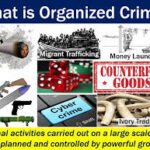
Represents another nefarious enterprise for transnational organized crime networks, with victims often subjected to forced labor, sexual exploitation, or organ harvesting. These networks prey on vulnerable populations, including migrants, refugees, and marginalized communities, luring individuals with false promises of employment, education, or a better life. Once entrapped, victims are subjected to coercion, violence, and exploitation, perpetuating a cycle of abuse and suffering.
Additionally, transnational gangs, such as MS-13 and 18th Street Gang, pose a significant threat to public safety, particularly in immigrant communities. These gangs engage in a range of criminal activities, including drug trafficking, extortion, and human smuggling, perpetrating violence and instilling fear to maintain control over their territories. Their activities undermine community cohesion, exacerbate social tensions, and impede efforts to foster trust between law enforcement and marginalized populations.
Origins and Evolution:
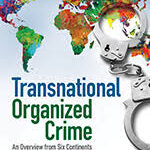
The roots of transnational organized crime in the USA can be traced back to the Prohibition era when organized crime syndicates capitalized on the illegal trade of alcohol. Over the decades, these criminal enterprises diversified their activities, branching out into narcotics, gambling, and extortion. The globalization of trade and advancements in technology have further facilitated the expansion of transnational criminal networks, enabling them to establish intricate supply chains and money laundering operations across borders.
Key Players and Operations:
Transnational organized crime networks in the USA encompass a diverse array of criminal enterprises, each specializing in different illicit activities. Mexican drug cartels, such as the Sinaloa Cartel and the Jalisco New Generation Cartel, dominate the illicit drug trade, smuggling vast quantities of cocaine, heroin, and methamphetamine into the country. Meanwhile, Eastern European syndicates are involved in cybercrime, identity theft, and credit card fraud, exploiting vulnerabilities in the digital realm.
Human trafficking represents another lucrative enterprise for transnational criminal networks, with victims often subjected to forced labor, sexual exploitation, or organ harvesting. These networks prey on vulnerable populations, exploiting disparities in wealth and opportunity to lure individuals into modern-day slavery. Additionally, transnational gangs, such as MS-13 and 18th Street Gang, perpetrate violence and extortion in immigrant communities, further destabilizing neighborhoods and undermining public safety.
Challenges and Implications:
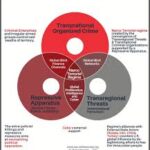
Combatting transnational organized crime poses significant challenges for law enforcement agencies and policymakers. The clandestine nature of these networks makes gathering intelligence and securing convictions difficult, requiring international cooperation and coordination among multiple agencies. Moreover, the vast profits generated by illicit activities enable criminal organizations to corrupt officials and infiltrate legitimate businesses, further complicating efforts to dismantle their operations.
The proliferation of transnational organized crime also has profound implications for society, undermining the rule of law, eroding trust in institutions, and perpetuating violence and exploitation. Vulnerable communities, particularly those marginalized by socioeconomic factors or immigration status, bear the brunt of these criminal activities, facing increased rates of violence, substance abuse, and exploitation.
Response and Strategies:
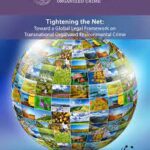
Addressing the threat posed by transnational organized crime requires a multifaceted approach that combines law enforcement efforts, international cooperation, and targeted interventions. Enhanced border security measures, including the use of technology and intelligence-sharing agreements, are essential for intercepting illicit shipments and disrupting smuggling routes.
Furthermore, investing in community-based initiatives aimed at addressing the root causes of crime, such as poverty, unemployment, and lack of access to education, can help mitigate the vulnerabilities exploited by transnational criminal networks. Strengthening international partnerships and promoting the rule of law are also critical components of a comprehensive strategy to combat organized crime and uphold global security.
Conclusion:
Transnational organized crime networks represent a formidable challenge to the United States and the international community at large. Their ability to adapt to changing environments and exploit vulnerabilities underscores the need for a coordinated and proactive response. By leveraging intelligence-sharing, enhancing law enforcement capabilities, and addressing the underlying socioeconomic factors that fuel criminality, the USA can diminish the influence of transnational organized crime and safeguard the well-being of its citizens.
